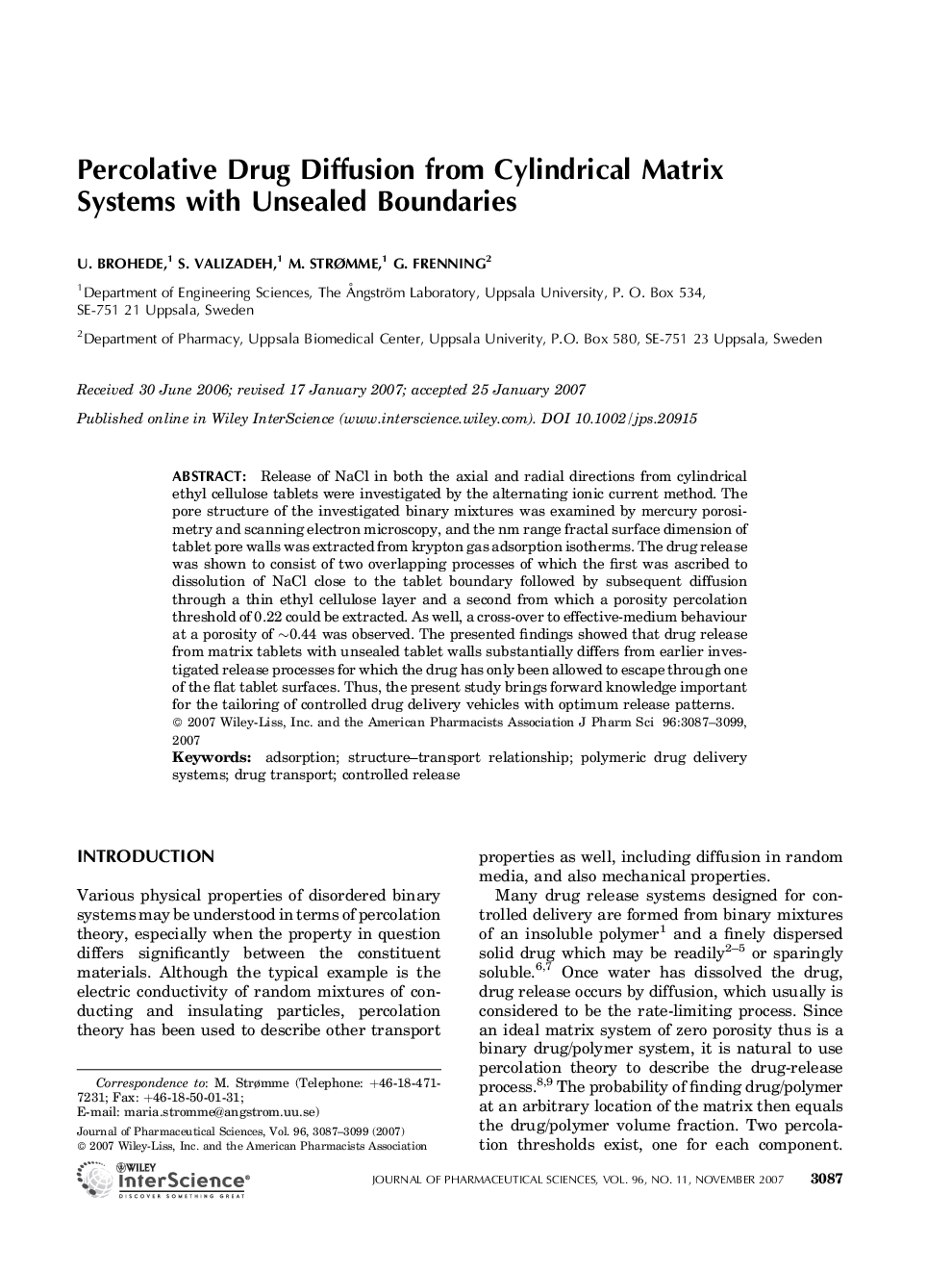| Article ID | Journal | Published Year | Pages | File Type |
|---|---|---|---|---|
| 2487734 | Journal of Pharmaceutical Sciences | 2007 | 13 Pages |
Abstract
Release of NaCl in both the axial and radial directions from cylindrical ethyl cellulose tablets were investigated by the alternating ionic current method. The pore structure of the investigated binary mixtures was examined by mercury porosimetry and scanning electron microscopy, and the nm range fractal surface dimension of tablet pore walls was extracted from krypton gas adsorption isotherms. The drug release was shown to consist of two overlapping processes of which the first was ascribed to dissolution of NaCl close to the tablet boundary followed by subsequent diffusion through a thin ethyl cellulose layer and a second from which a porosity percolation threshold of 0.22 could be extracted. As well, a crossâover to effectiveâmedium behaviour at a porosity of â¼0.44 was observed. The presented findings showed that drug release from matrix tablets with unsealed tablet walls substantially differs from earlier investigated release processes for which the drug has only been allowed to escape through one of the flat tablet surfaces. Thus, the present study brings forward knowledge important for the tailoring of controlled drug delivery vehicles with optimum release patterns. © 2007 WileyâLiss, Inc. and the American Pharmacists Association J Pharm Sci 96: 3087-3099, 2007
Related Topics
Health Sciences
Pharmacology, Toxicology and Pharmaceutical Science
Drug Discovery
Authors
U. Brohede, S. Valizadeh, M. Strømme, G. Frenning,
